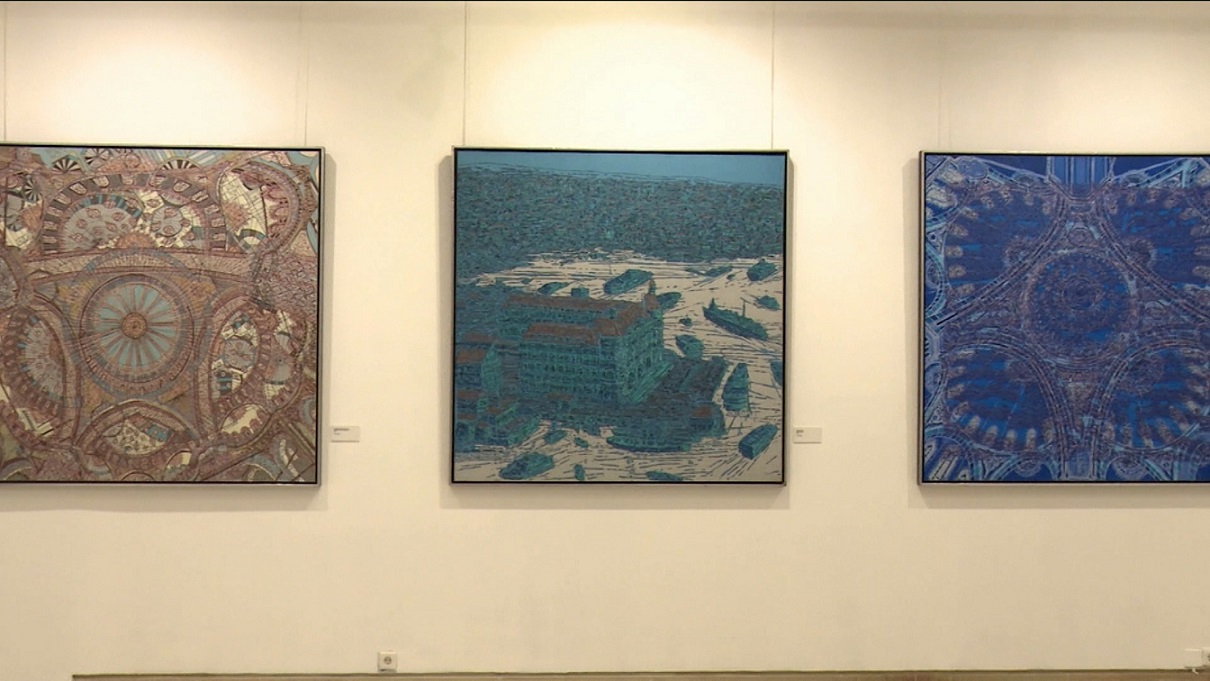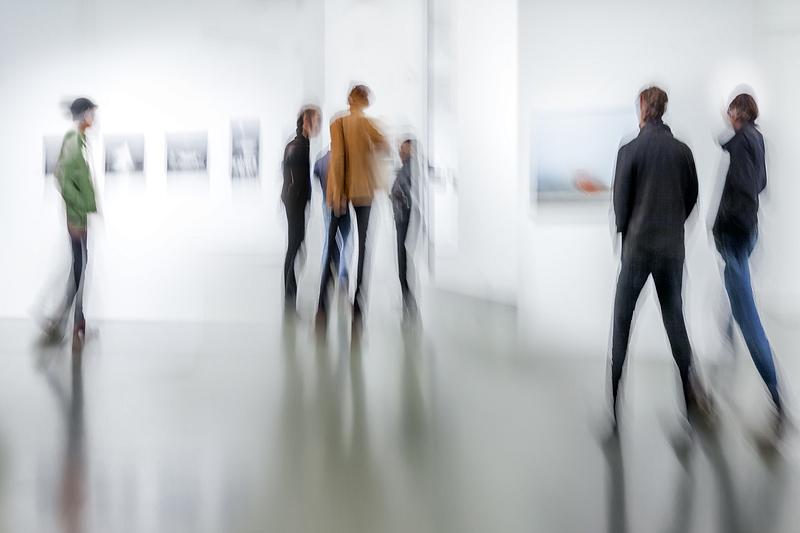Victor Brauner, Salvador Dali, and Paula Modersohn-Becker are among the artists whose work can be seen this month, adding to the offer of shows focused on Brâncuși and Picasso that can still be seen until January in Timișoara and Bucharest. A selection of what is on show below.
The exhibition Victor Brauner. Between the Oneiric and the Occult, open at the National Museum of Art of Romania (MNAR) in Bucharest between December 1 and April 30, looks at the local sources in the artist’s work as well as his contribution to the Surrealist movement. This is the second exhibition on the work of Brauner that opens this year in the country, following the one in Timișoara this spring as part of the city’s European Capital of Culture program.
The show gathers paintings and drawings from the collections of MNAR, Musee National d’Art Moderne – Centre Pompidou, Musee d’Art Moderne et Contemporain de Saint-Etienne Metropole, Musee d’Art Moderne et Contemporain de Strasbourg, Visual Art Museum in Galaţi, and Ţara Crişurilor Museum in Oradea, as well as from various private collections. The exhibition will also include newspapers and magazines illustrated by the artist, in addition to documents from Romania’s National Archives, photos and documentary films from the inter-war period from the Dimitrie Gusti National Village Museum. The section Les illuminations successives from Fabrice Maze’s 2004 film Victor Brauner – Le grand illuminateur totemique is also included in the show.
At the same time, the Kretzulescu Halls of MNAR will host until February 18 Devrim Erbil: Istanbul of Yesterday and Today, a show gathering works of the Turkish artist Devrim Erbil. Twenty-nine paintings and a silk work created by Erbil between 1989 and 2023 are included in the show.
The artist, who was born in Uşak in 1937, has been painting abstract representations of urban and nature landscapes from Anatolia and Istanbul since the 1970s. His works are described as “not mere imitations of traditional miniatures, but modern, original works, coloured by an immense quantity of realistic details.”
Erbil has had numerous solo and group exhibitions in Turkey and internationally and has taught at the Fine Arts Academy in Istanbul. Since 2004, a museum carrying his name has been open in Balıkesir Metropolitan Municipality.

The Universe of Salvador Dali, covering some 170 works of the Spanish artist, is open at Arcub between December 13 and May 12. The works range from sculptures and drawings to engravings, miniatures, and furniture. The exhibited items are part of the collection of Beniamino Levi. The art collector met the artist in the 1960s and commissioned a series of bronze sculptures inspired by the best-known motifs and themes of the Surrealist imagery.
The exhibition, which tracks the variety of themes and symbols in Dalí’s work, highlights the influences, experiments and the various stages of his career. The public can also experience the artist’s universe through virtual reality and “discover hidden details in the works of the Spanish artist.”
Among the best-known items included in the show are the bronze sculptures encrusted with precious stones, among them Dance of Time, Dalinian Dancer, Space Venus, Alice in Wonderland, and Woman with a Head of Roses. The exhibition also includes glass sculptures designed in collaboration with Daum crystal manufacture such as Venus de Milo with Drawers and Rhinocerotype Chippendale. In addition to gold miniatures and illustrations, visitors can also see the Mae West Lips Sofa, a testament to “Dalí’s versatility and the unique way in which he transposed his sources of inspiration into his art.”
Monica Lovinescu. The Voice that Was Given to Us, an exhibition celebrating 100 years since the birth of the Romanian writer and journalist known as an opponent of the Romanian Communist regime, is open until December 30 at La Mița Biciclista Stabiliment Creativ.
The exhibition explores the life of Monica Lovinescu, also known as one of the voices of Radio Free Europe during the Communist regime, from 1923 to 2008. The show features photos from the Lovinescu archive in Paris, letters and other personal belongings, as well as a series of dialogues Lovinescu had with personalities such as writer and historian Mircea Eliade, playwright Eugen Ionescu, literary critic and journalist Virgil Ierunca (and Lovinescu’s husband), poets Angela Marinescu and Ana Blandiana, literary critic Sorin Alexandrescu, and writer Octavian Paler.
The exhibition is dedicated to “our parents and their parents, whose life has been completely mutilated by the totalitarian regime. And who hoped that we would live in a better world.” It is meant as a “collective endeavour to find ourselves, with the dramas, hopes, and stories of our parents and grandparents, an attempt to embrace and heal a painful and open past, whose repercussions can be felt until today in Romanian society.”
Mița Biciclista, a historical monument house close to Amzei Church in Bucharest, reopened last year as La Mița Biciclista Stabiliment Creativ, with a program of cultural events.
Paula Modersohn-Becker. Drawings, Prints and Photography is open at Art Safari until January 14. An exhibition of ifa (Institut für Auslandbeziehungen), it showcases, for the first time in the country, works by Paula Modershon-Becker (1876-1907), one of German Modernism’s representative artists.
Working at the turn of the century in opposition to strict academic opinion on art, Modersohn-Becker moved to the artists’ colony of Worpswede to be able to paint in nature, and not in a studio. Unlike her colleagues, she did not draw on Impressionism and Art Nouveau but rather on the work of Cezanne, van Gogh, and Gauguin. She left behind more than 700 paintings and 1000 drawings and etchings. A museum in her memory was established in Bremen in 1927.
Besides Modersohn-Becker’s drawings and etchings, the show includes works by her Worpswede colleagues, namely Otto Modersohn, Fritz Mackensen, Hans am Ende, Fritz Overbeck, and Heinrich Vogeler.
The group show The Signs for Somewhere and Elsewhere and Here and Now opens at Gaep’s new venue on December 8.
Works by Răzvan Anton, Pavel Brăila, Felipe Cohen, Vlatka Horvat, Sebastian Moldovan, Damir Očko, Cătălin Pîslaru, Mihai Plătică, Raluca Popa, Marilena Preda Sânc, Mircea Stănescu, and Ignacio Uriarte are included in the exhibition. Their contributions “revolve around lived or imagined experiences of inhabiting space and around shape-shifting spaces, both external and internal, that are in a flux of remaking” in a show that “opens itself up to ideas about living in the present moment (here and now) while also acknowledging the past and imagining the future (somewhere and elsewhere).”
All We Can Eat, Dan Vezentan’s second exhibition at Sandwich, is open at Malmaison Studios until February 3. It showcases the artist’s series of Harvesting Structures, which includes models, renders, sketches, and monumental works that “at their core, pay tribute to agricultural workers.”
“Different containers, in various materials (wood, twigs, rope, brass, etc.), traditional or not, from different parts of the world, used for certain types of harvest – each contains within themselves a certain rhythm of life, an actual speed or slowness, a certain amount of greed or decency. How big is our container, in which we gather and gather and are expected to accumulate?,” a presentation of the exhibition asks.
Dan Vezentan’s practice revolves around the zootechnic and agricultural universe, the processes of domestication of plants and animals, focusing on rural technology. His solo exhibitions include: Water, Food, Shelter at the National Museum of Contemporary Art in Bucharest (2018); L’Anatomia del Cavallo at Kunsthalle Bega Box in Timișoara; Why Does The Earth Bear Us? at Antipa Natural History Museum, Bucharest (2020); and Feed Me/ No Gravity at Sandwich (2016).
Sevrajă, the solo show of artist Atoma, can be visited until December 12 at Kulterra Gallery in Bucharest. The works in the show “explore the feeling of loneliness and isolation in a world where social networks and technology should connect us and favor communication.”
Atoma, who lives and works in Bucharest, studied painting at the Art University of Bucharest and mural art at the Decorative Arts Faculty, also in Bucharest. Her mural works can be seen in Bucharest, Târgu Jiu, Bacău, Sibiu, Satu Mare, Petroșani, Râmnicu Vâlcea and Galați.
Kulterra is a contemporary art gallery focused on showcasing young artists from Romania and Moldova.
The photography exhibition Collectives of Czech artist Roman Franc can be visited at the National Museum of the Romanian Peasant until December 10. The exhibition covers a selection of group photos taken by Franc in various countries and cultures starting in 2015, including portraits of the communities of the six Czech villages in the Romanian region of Banat.
The portraits of the residents of the six Czech villages in Banat, taken at the beginning of the year for Timișoara’s European Capital of Culture program, add a Romanian chapter to the Collectives series, which has taken the artist all over the world for the past nine years. They are meant to “represent, self-represent, and document the cultural diversity of Banat, and, by extension, of the entire country.”
Hand(s), an exhibition dedicated to Romanian-born artist Doru Covrig (1942-2022), is open at Galleria 28 in Timișoara until December 15. The show gathers drawings, objects and relevant sculptures from a decade of the artist’s activity.
Covrig, a graduate of Nicolae Grigorescu Fine Arts Institute in Bucarest, lived and worked in France starting 1982. His works are included in public and private collections in Romania (Museum of Recent Art and the National Museum of Contemporary Arts in Bucharest, National Museum of Banat in Timișoara), France, Japan, USA and more. He is known, among others, for his sculpture series – Dictators, Gutenberg, Totems, Buddhas.
“Doru Covrig is an artist deeply rooted in the figurative tradition […] an artist who, being a seeker, experimenter of new materials chosen precisely for their everyday value , for their precarious aspect, doesn’t want to let himself fall for traditional techniques,” art critic Dan Hăulică comments on Covrig’s work.
The exhibition can be visited by appointment.
This Is Not My Youthopia, an exhibition gathering the works of six young artists in Timișoara, is open between December 5 and December 15 at Ștefania Palace in the city.
The artists included in the show, selected following an open call, are Alexandra Costea, Anca Șișu, Andreea Ioniță, Dorian Boloca, Ioana Bartha and Sorin Valea. They worked with curators from the Excellence Center in the Study of Image in Bucharest to develop their projects on the concept of the post-digital and the theme of Youthopia. The curators are Alexandra Buiga, Andra Merfu, Eliza Pătrașcu, Iulia Kycyku, Mihai Milea and Miruna Barcan.
The works of the young artists “speak rather of the surrounding world and particularly about loss, in various forms – from the disappearance of the places around them (childhood homes, neighborhood stores or even the natural environment) to the loss of the people dear to them or of their own identity in the context of the digital world taking over more and more of our lives,” according to Andrei Tudose, one of the coordinators of the mentorship program Post-Digital Intersections, which ends with this show.
Works by Andrei Gamarț are on show until December 3 at the Multicultural Center of Transilvania University in Brașov. The exhibition, titled All You Have Seen Will Come True, encompasses works made between 2013 and 2023, allowing the public to get a chronologic view of the artist’s creative process itinerary and the themes that followed his preoccupations throughout the years. Time, memory, space, and light have all been explored by Gamarț in his work, as well as the relationships that form between these elements and the way they are perceived or not by the viewers.
(Opening photo: Bluraz | Dreamstime.com)
simona@romania-insider.com

